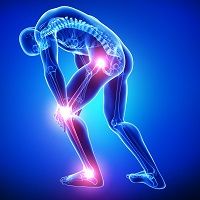Article
Psychological Factors Influence Severity of Pain
Author(s):
Patients with a range of pain conditions may face amplified discomfort based how on how they perceive their symptoms. The findings were presented at the 34th Annual American Pain Society Scientific Meeting in Palm Springs, CA.

Patients with a range of pain conditions may face amplified discomfort based how on how they perceive their symptoms. The findings were presented at the 34th Annual American Pain Society Scientific Meeting in Palm Springs, CA.
Recent research revealed a specific personality group that experiences heightened low back pain, but this new study addressed pain catastrophizing in several types of patients. Lead author Olivia Franceschelli, BS, and her colleagues from Brigham and Women’s Hospital in Boston, MA examined 51 participants to make the determination.
“Catastrophizing’s mechanisms are likely multifactorial, but one proposed pathway involves amplification of inflammatory responses to pain and stress,” the study said.
The participant pool— including 24 patients with fibromyalgia, 15 with osteoarthritis, and 12 healthy controls – completed the Brief Pain Inventory questionnaire and the Pain Catastrophizing scale. The group underwent bloodwork up to 2 hours after the quantitative sensory testing (QST) as well.
“Reaction to prolonged deep-tissue pressure pain was ascertained by inflating a blood pressure cuff around the lower leg, over the gastrocnemius muscle,” the study explained. “In addition, participants underwent a series of cold pressor tasks involving immersion of the hand in a circulating 4oC water path.”
The results showed that the patients with fibromyalgia had higher catastrophizing scores as well as lower pain thresholds and increased sensitivity to the cold pressor. The osteoarthritis group also showed elevated pain sensitivity, although not as much as fibromyalgia.
It was revealed thatinterleukin-6 (IL-6)was present in all participants during the testing. The IL-6 levels were similar across the board regardless of condition which indicates that the pro-inflammatory cytokine appeared as a stress response.
“Catastrophizing is elevated in both groups relative to controls, though only situational catastrophizing was linked with IL-6 reaction, reactivity, and only in the fibromyalgia group,” the authors clarified.
With pain being such a complex problem, this study revealed more insight to a possible pathway.





